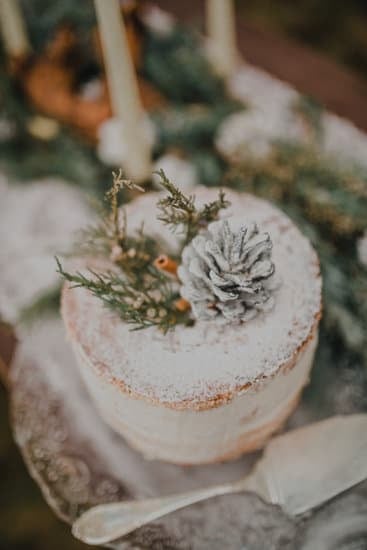Are there bridesmaids in Indian weddings? The customs and traditions of Indian weddings are rich and diverse, with numerous rituals and ceremonies that vary by region and community. In this article, we will delve into the role of the bridal party in Indian culture, explore the tradition of bridesmaids in Indian weddings, and discuss the significance of sisters of the bride.
We will also examine how modern Indian weddings have evolved to embrace bridesmaids and the influence of Western traditions on Indian wedding customs. Join us as we celebrate the diversity and beauty of Indian wedding traditions.
Indian weddings are known for their colorful and elaborate celebrations, steeped in tradition and cultural significance. From vibrant attire to intricate rituals, each aspect reflects the unique customs passed down through generations. One such tradition is the role of the bridal party, which includes close friends and family members who play a special part in the wedding festivities.
Throughout this article, we will explore how Indian weddings honor their rich traditions while embracing modern influences, particularly when it comes to including bridesmaids in the ceremony. Whether you are planning an Indian wedding or simply curious about different cultural practices, this exploration into the traditions of Indian weddings promises to be enlightening.
The Role of the Bridal Party in Indian Culture
In Indian culture, the bridal party plays a significant role in the wedding festivities. This includes not only the bride and groom, but also their close friends and family members who take on specific responsibilities to ensure that the wedding ceremonies run smoothly and are filled with joy and celebration. The bridal party is an integral part of Indian weddings, contributing to the overall festive atmosphere and adding a sense of camaraderie and support for the couple.
Traditional Significance
The role of the bridal party in Indian culture has deep traditional significance. In ancient Hindu traditions, the bridal party, known as the “baraat,” accompanies the groom as he travels to the wedding venue. This procession often includes family members, friends, and musicians who create a lively and joyous atmosphere. In addition, there are specific roles within the bridal party that are assigned to individuals based on their relationship to the bride or groom.
Family Support
The bridal party serves as a symbol of familial support for the couple entering into marriage. In Indian culture, weddings are not just union of two individuals but also an alliance between two families. Therefore, having a strong presence of close family members and friends in the bridal party signifies support and unity from both sides. This can include siblings, cousins, close friends, or anyone else who holds a special place in the couple’s lives.
The Evolution of Roles
While certain traditions remain unchanged, there has been an evolution in the roles and responsibilities of the bridal party in modern Indian weddings. The concept of bridesmaids has become more prevalent in Indian weddings today, influenced by Western wedding customs. However, this does not replace traditional roles within the bridal party but rather adds a new layer to it. As such, there is now a blend of traditional customs with modern influences in Indian wedding celebrations.
Are There Bridesmaids in Indian Weddings? Exploring the Tradition
The tradition of bridesmaids in Indian weddings is an interesting subject to explore. While bridesmaids are not a customary practice in Indian culture, there are roles similar to the concept of bridesmaids that play a significant part in Indian wedding ceremonies.
In Indian weddings, the bridal party typically consists of close female relatives and friends who play an important role in assisting the bride throughout the wedding proceedings. This group of women may not be referred to as “bridesmaids” per se, but they fulfill similar responsibilities and duties as would be expected from bridesmaids in Western weddings.
In Indian weddings, the female relatives and friends of the bride often accompany her during pre-wedding rituals, such as mehndi (henna) ceremonies and sangeet (musical) events. They provide emotional support to the bride and actively participate in various traditions leading up to the wedding day. On the day of the wedding, these women play a crucial role in helping the bride prepare for her nuptials and offer assistance with her attire and jewelry.
While there may not be a direct equivalent to “bridesmaids” in traditional Indian weddings, it is clear that there are individuals who fulfill roles that are akin to those of bridesmaids in Western culture. The presence of a supportive group of female companions is an integral part of Indian wedding customs, reflecting the essence of unity and solidarity within the community.
The Significance of the Sisters of the Bride in Indian Weddings
In Indian weddings, the bride’s sisters hold a significant role in the wedding ceremony and celebration. In Indian culture, the bond between siblings is cherished and revered, making the presence of the bride’s sisters an essential part of the wedding festivities. The sisters of the bride are known as “her faithful friends” and play a crucial role in supporting and assisting the bride throughout her wedding journey.
One of the key roles of the bride’s sisters in an Indian wedding is to participate in various pre-wedding rituals and ceremonies. They are often involved in helping the bride get ready for important functions, such as adorning her with traditional bridal jewelry and applying intricate henna designs on her hands and feet. These rituals not only symbolize the bond between sisters but also signify their support for the bride as she transitions into married life.
During the wedding ceremony itself, the sisters of the bride are often tasked with performing special rituals and traditions, such as tying ceremonial threads or conducting specific prayers and blessings. Their active involvement in these customs not only adds to the spiritual significance of the occasion but also showcases their love and support for their sister during this momentous event.
| Role of Bride’s Sisters | Importance |
|---|---|
| Participate in pre-wedding rituals | Demonstrates support for the bride |
| Perform special rituals during wedding ceremony | Adds spiritual significance to occasion |
The Evolution of Bridesmaids in Modern Indian Weddings
In modern Indian weddings, the role of bridesmaids has evolved to adapt to changing cultural norms and influences from Western traditions. While traditional Indian weddings did not have a concept of bridesmaids, the trend is increasingly becoming popular in contemporary ceremonies. Here are some key aspects of the evolution of bridesmaids in modern Indian weddings:
- Integration of Western Influence: As Indian culture becomes more globalized, there is a growing trend of incorporating Western wedding traditions into Indian ceremonies. Bridesmaids are one such element that has been embraced by many modern couples as a way to add a touch of contemporary flair to their nuptials.
- Support System for the Bride: In traditional Indian weddings, the focus was primarily on family members and relatives fulfilling various roles and responsibilities. However, with the introduction of bridesmaids, the bride now has a dedicated support system comprised of her closest friends who assist her in various wedding-related tasks and provide emotional support during the wedding festivities.
- Celebrating Female Bonding: The inclusion of bridesmaids in modern Indian weddings also reflects a shift towards celebrating female friendships and bonding. The presence of close friends standing by the bride’s side symbolizes sisterhood and camaraderie, adding an extra layer of joy and warmth to the wedding celebrations.
The evolving role of bridesmaids in modern Indian weddings demonstrates how cultural traditions can adapt and evolve while still maintaining their inherent beauty and significance. By embracing this trend, couples are able to infuse their weddings with elements that honor both their heritage and contemporary influences while creating meaningful experiences for themselves and their loved ones.
The Responsibilities and Duties of Bridesmaids in Indian Weddings
In Indian weddings, the responsibilities and duties of bridesmaids are deeply rooted in the traditions and customs of the culture. Bridesmaids in Indian weddings play a significant role in assisting the bride throughout the wedding festivities, ensuring that she looks her best, and providing emotional support during this important milestone.
One of the key responsibilities of bridesmaids in Indian weddings is to help the bride get ready for the various ceremonies and rituals. This includes helping her with her outfit changes, jewelry, makeup, and hairstyle. Bridesmaids also assist the bride in performing specific pre-wedding rituals, such as applying turmeric paste on her skin for a pre-wedding glow or participating in traditional songs and dances.
Additionally, bridesmaids are often responsible for organizing and hosting pre-wedding events such as haldi (turmeric) ceremony, mehndi (henna) ceremony, and sangeet (music) night. They ensure that these events run smoothly while creating a joyful and celebratory atmosphere for the bride and her family members.
Moreover, bridesmaids provide moral support to the bride throughout the wedding festivities. They act as confidantes for the bride during moments of excitement or nervousness, offering encouragement and reassurance during this emotional time. These supportive roles highlight how bridesmaids are integral to the successful execution of an Indian wedding celebration.
| Responsibilities | Duties |
|---|---|
| Assisting with Bride’s outfit changes | Organizing pre-wedding events |
| Helping with makeup and jewelry | Providing moral support to the bride |
| Participating in pre-wedding rituals | Ensuring smooth running of events |
The Trend of Western Influence on Indian Wedding Traditions
In recent years, there has been a noticeable trend of Western influence on Indian wedding traditions, including the incorporation of bridesmaids into the ceremonies. Traditionally, Indian weddings did not have a concept of bridesmaids in the same way that Western weddings do. However, with the increasing exposure to Western culture and its wedding traditions, many Indian couples are choosing to include bridesmaids in their wedding parties.
The influence of Western culture on Indian weddings can be seen in various aspects, from the style of the wedding attire to the overall concept of the wedding ceremony. With social media and globalization, more and more young couples are getting inspired by the beautiful customs of Western weddings and incorporating elements such as bridesmaids into their own nuptial celebrations.
This trend is not without controversy, as some traditionalists argue that it dilutes the authenticity of Indian wedding customs. However, others see it as a natural evolution that reflects the changing values and preferences of modern Indian couples. As a result, bridesmaids are becoming more common in Indian weddings today, adding a touch of modern flair to these timeless celebrations while still honoring their rich cultural heritage.
Honoring the Tradition
Indian weddings are known for their rich traditions and ceremonial customs that have been passed down through generations. One of the most intriguing aspects of Indian weddings is the role of the bridal party, which includes not only the bride and groom, but also their close family members and friends. In recent years, there has been a growing trend of embracing bridesmaids in Indian weddings, reflecting the influence of Western wedding traditions.
The Significance of Sisters of the Bride
In traditional Indian weddings, the closest female relatives of the bride play a significant role in the wedding ceremony. These women, often the sisters of the bride, are considered to be her closest confidantes and supporters.
They actively participate in various pre-wedding rituals and ceremonies, offering their blessings and guidance to the bride as she prepares for her new life with her husband. While these women may not be referred to as “bridesmaids” in the Western sense, their roles are similar in providing emotional support to the bride throughout her wedding journey.
The Evolution of Bridesmaids in Modern Indian Weddings
In recent years, there has been a shift towards incorporating Western wedding customs into Indian nuptial celebrations. This has led to the emergence of bridesmaids in Indian weddings, where close friends or relatives of both the bride and groom take on specific roles and responsibilities within the wedding party.
Bridesmaids may be involved in planning pre-wedding events, assisting with dress fittings, and supporting the bride on her big day. While this may have originally stemmed from Western influence, it has become a way for modern Indian couples to honor their friendships and relationships within a more contemporary context.
The Responsibilities and Duties of Bridesmaids in Indian Weddings
The duties of bridesmaids in Indian weddings vary depending on individual preferences and customs. In some cases, bridesmaids may assist with organizing traditional pre-wedding ceremonies such as mehendi or sangeet.
They may also help with coordinating outfits or providing moral support to the bride during what can be a highly stressful time. Additionally, bridesmaids are often seen standing by the bride’s side during key moments at the wedding ceremony itself, showing their love and support for her as she takes this important step in her life.
As traditions continue to evolve within modern society, it is important to recognize that there is no single definition or rule when it comes to including bridesmaids in Indian weddings. Ultimately, what matters most is honoring cherished relationships while celebrating an age-old tradition in a way that feels authentic to each individual couple. Embracing bridesmaids into Indian weddings is one way that these celebrations reflect both cultural heritage and contemporary influences in a meaningful and beautiful manner.
Conclusion
In conclusion, Indian weddings are steeped in rich traditions and customs that have been passed down through generations. The role of the bridal party in Indian culture is significant, with a particular focus on the sisters of the bride. While there may not be a direct equivalent to “bridesmaids” in traditional Indian weddings, the concept has evolved in modern times as a result of Western influence.
The significance of the sisters of the bride cannot be underestimated in Indian weddings. They play a crucial role in various pre-wedding and wedding ceremonies, symbolizing the support and love for the bride as she embarks on this new chapter of her life. This tradition continues to be honored and cherished, even as modern influences lead to changes in wedding customs.
As Western influences continue to shape wedding traditions around the world, we see an increasing trend of embracing bridesmaids in Indian weddings. This reflects a desire to incorporate new elements while still honoring and respecting the beauty and diversity of Indian wedding traditions. Ultimately, whether or not there are formal bridesmaids in Indian weddings, what truly matters is celebrating love, unity, and the coming together of families – values that are at the heart of all cultural wedding traditions.

I have been involved in marriages for over 20 years helping couples and singles understand more about them.





